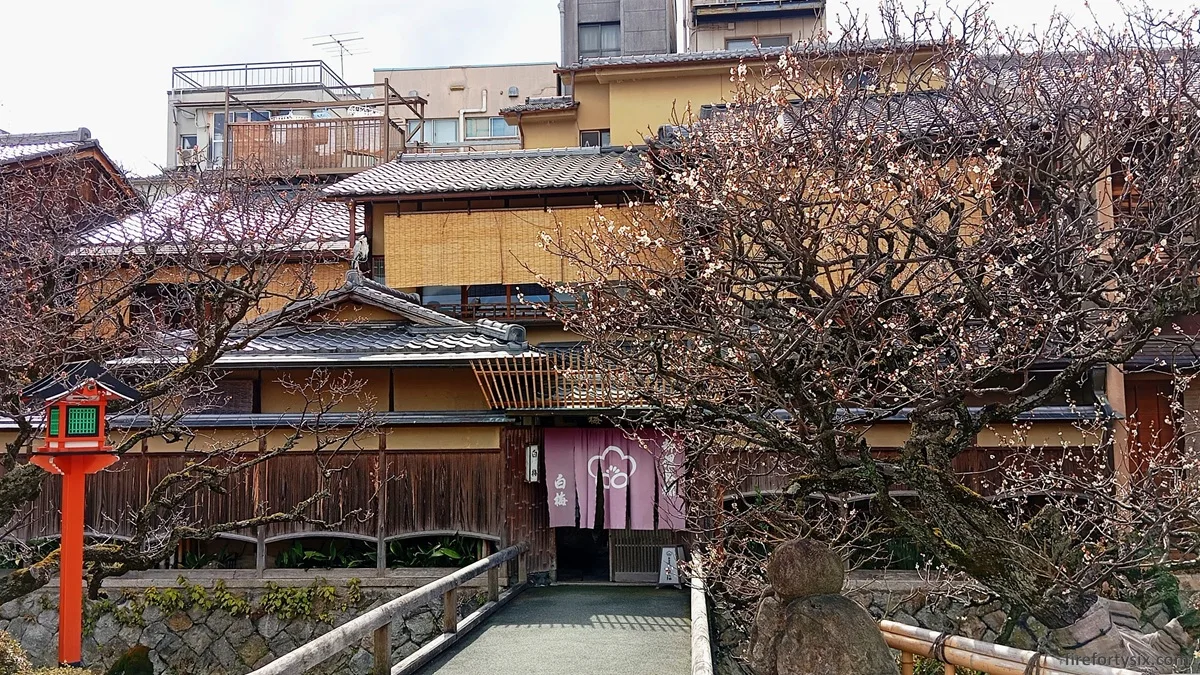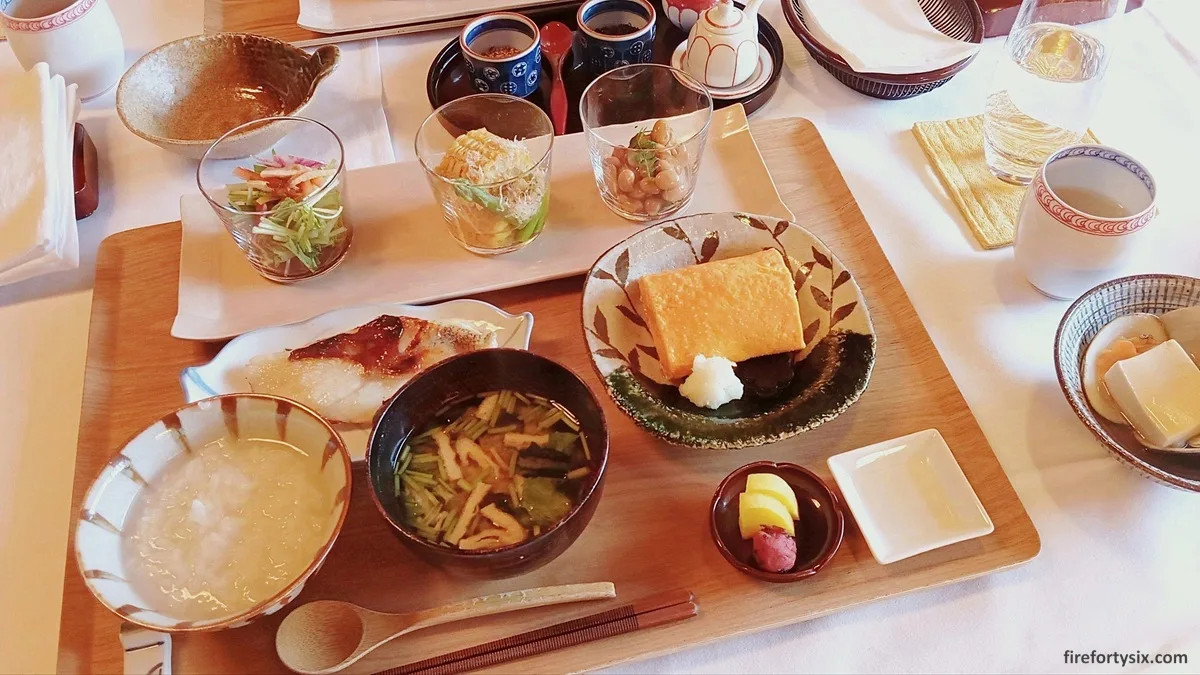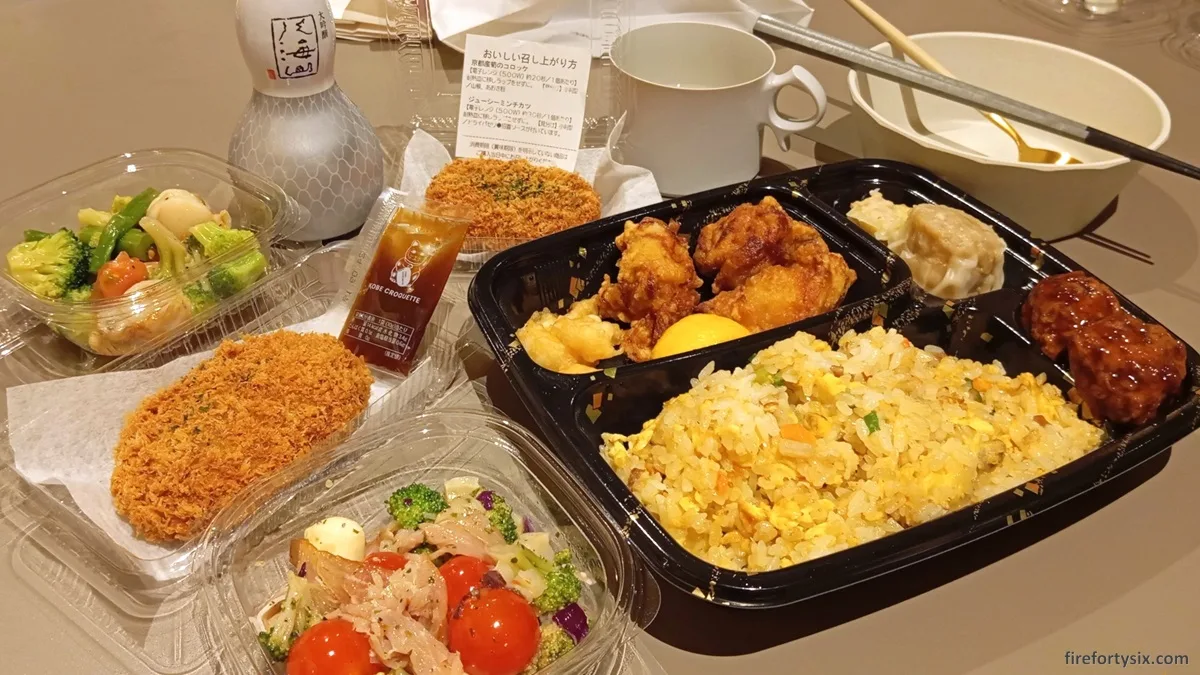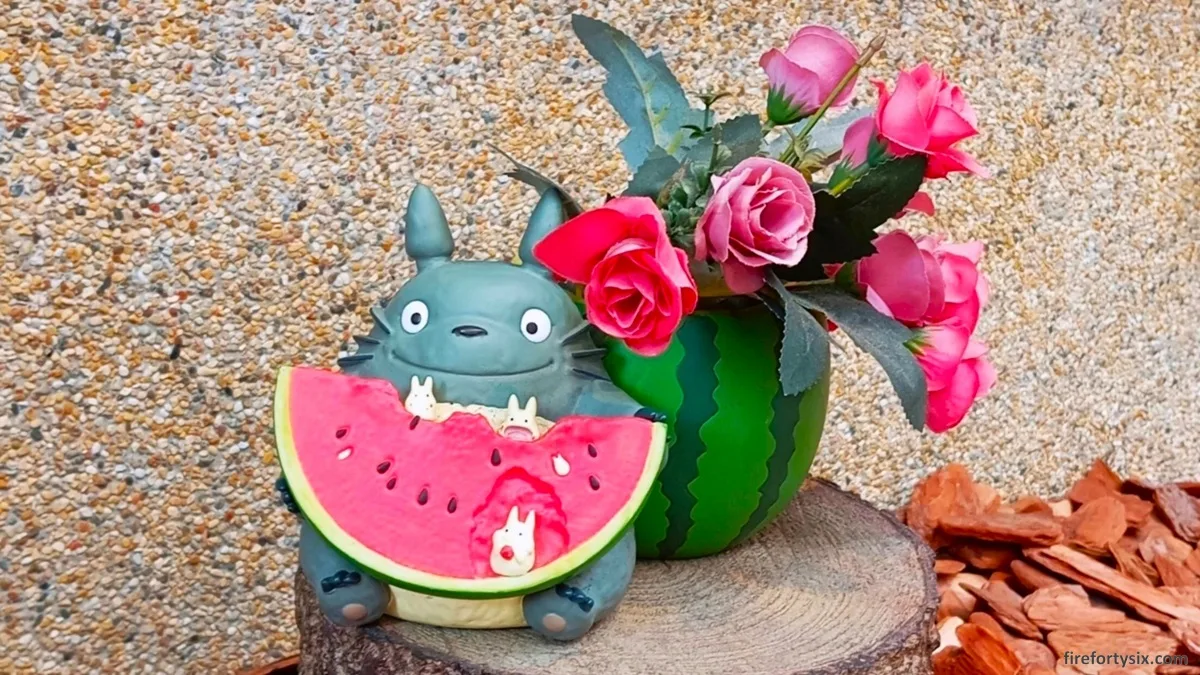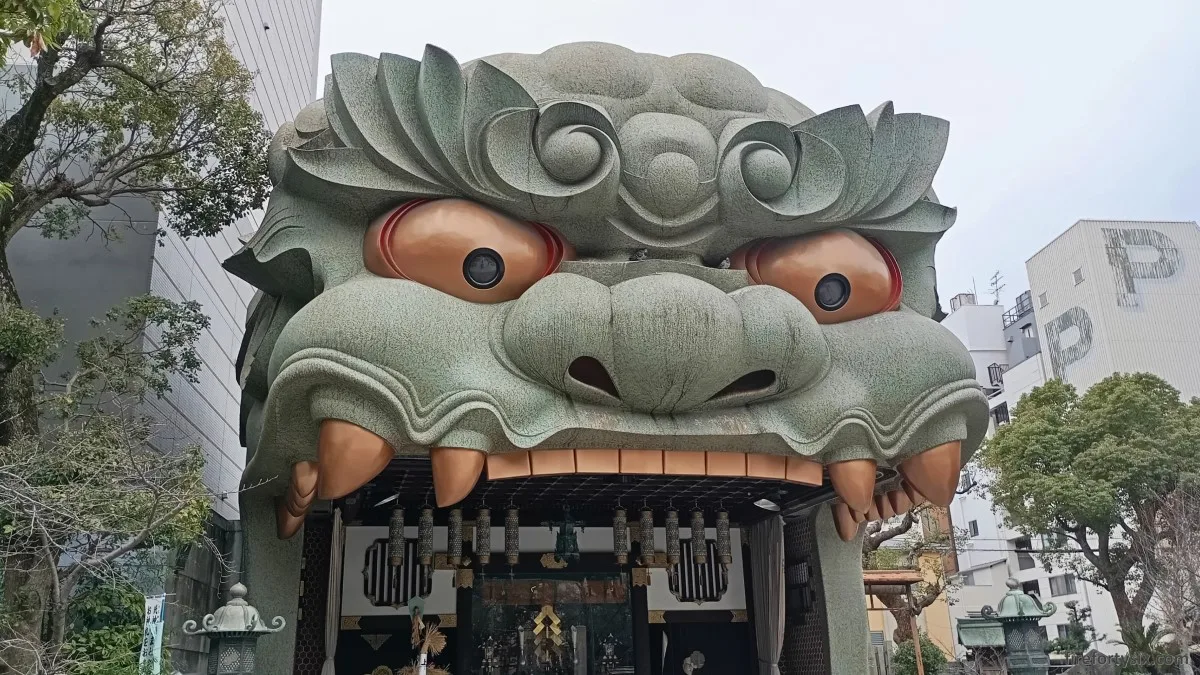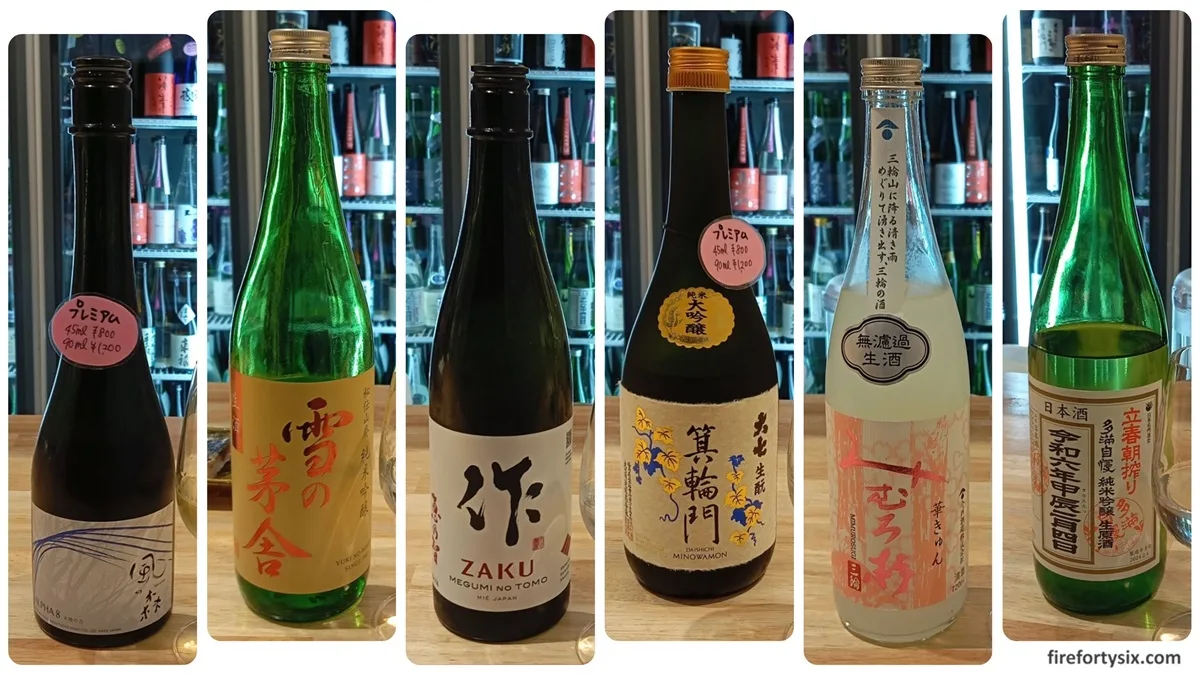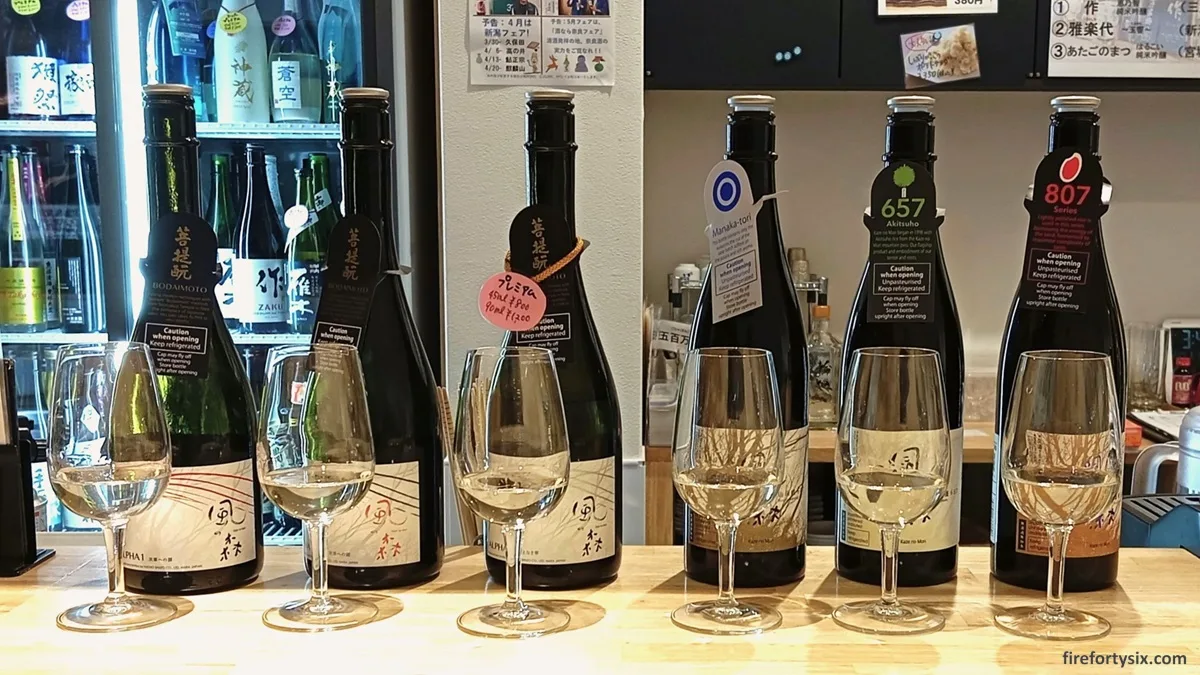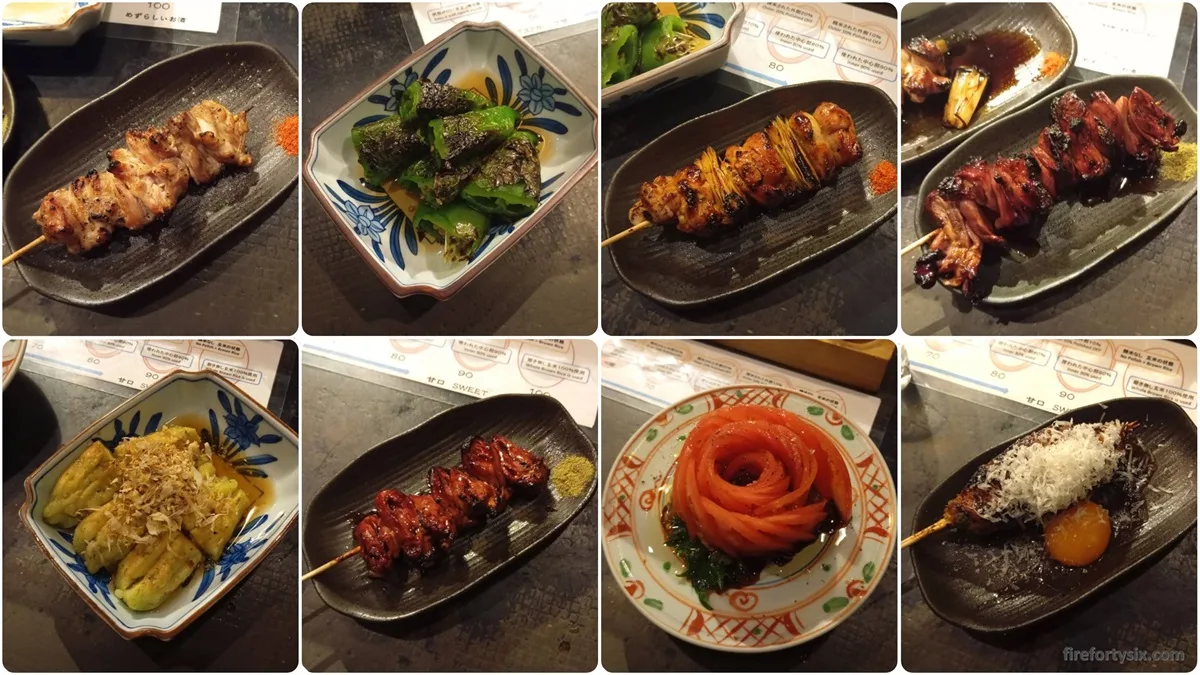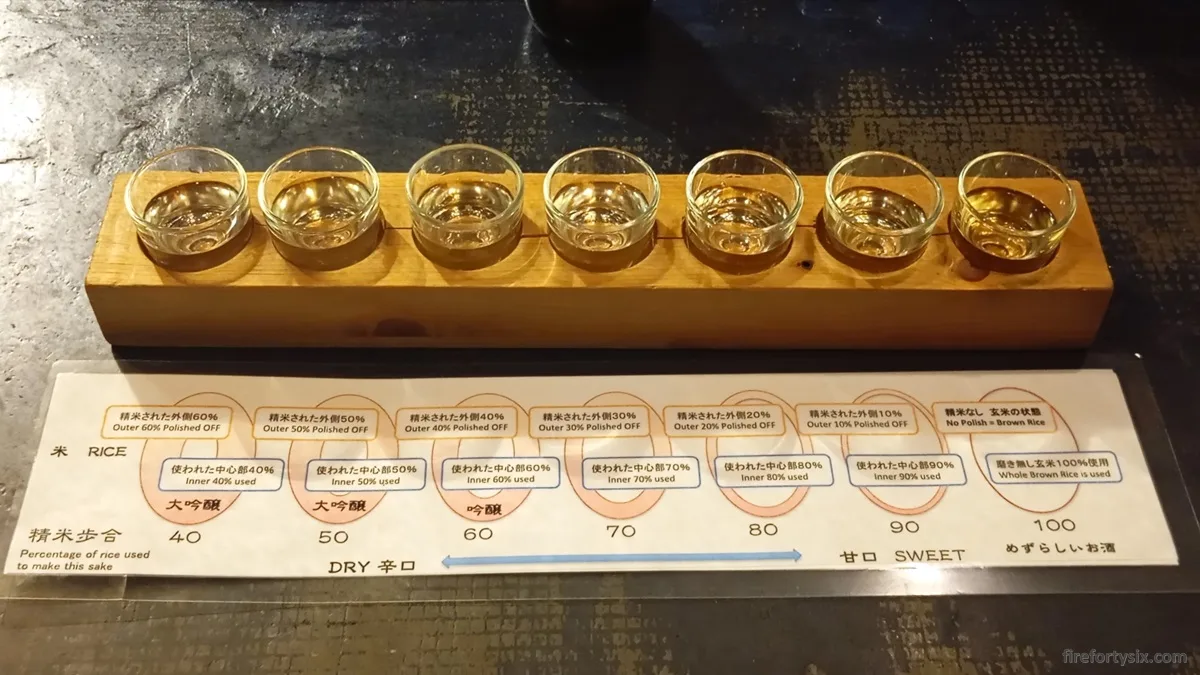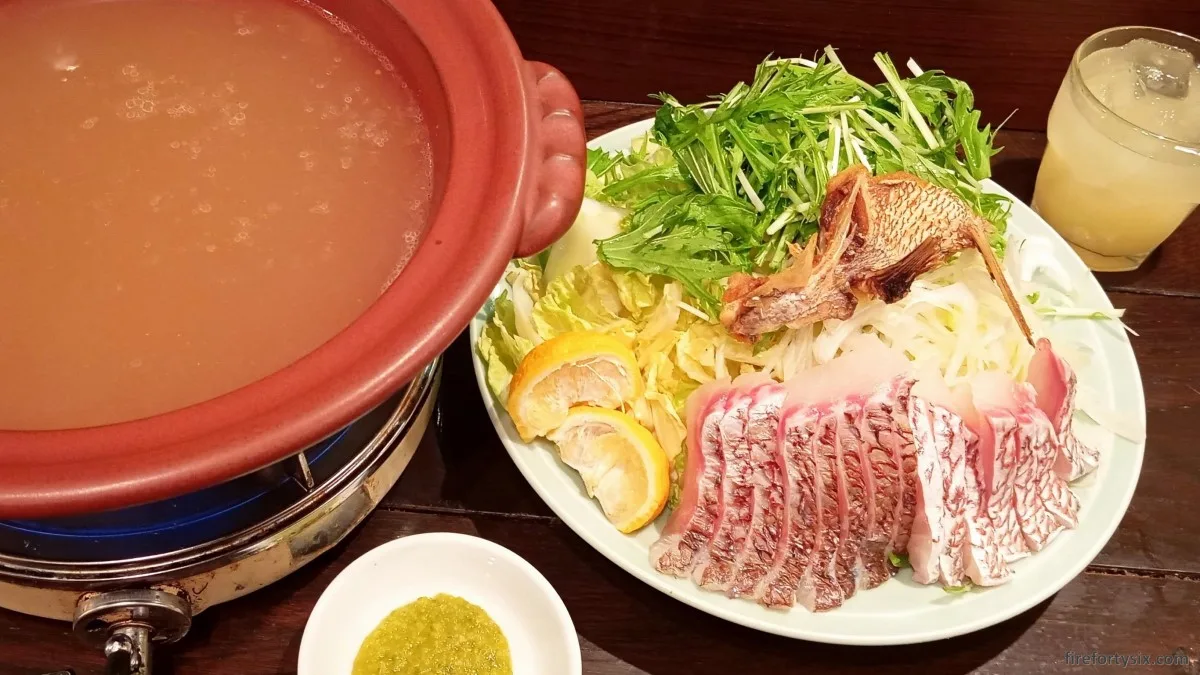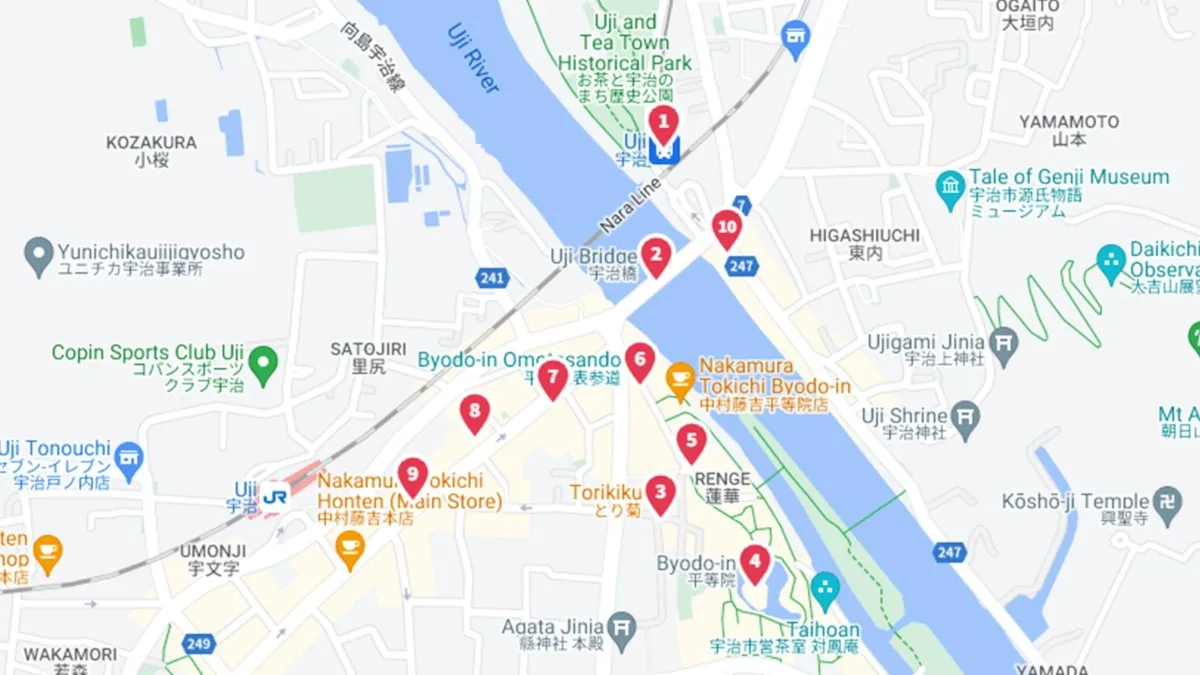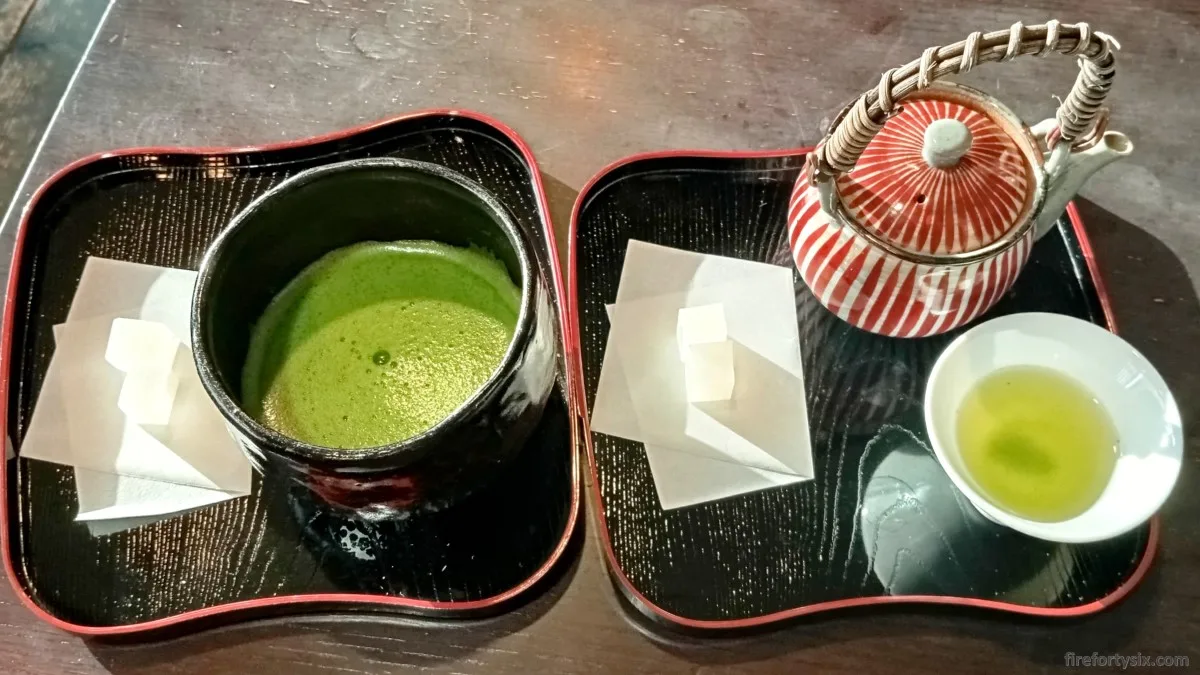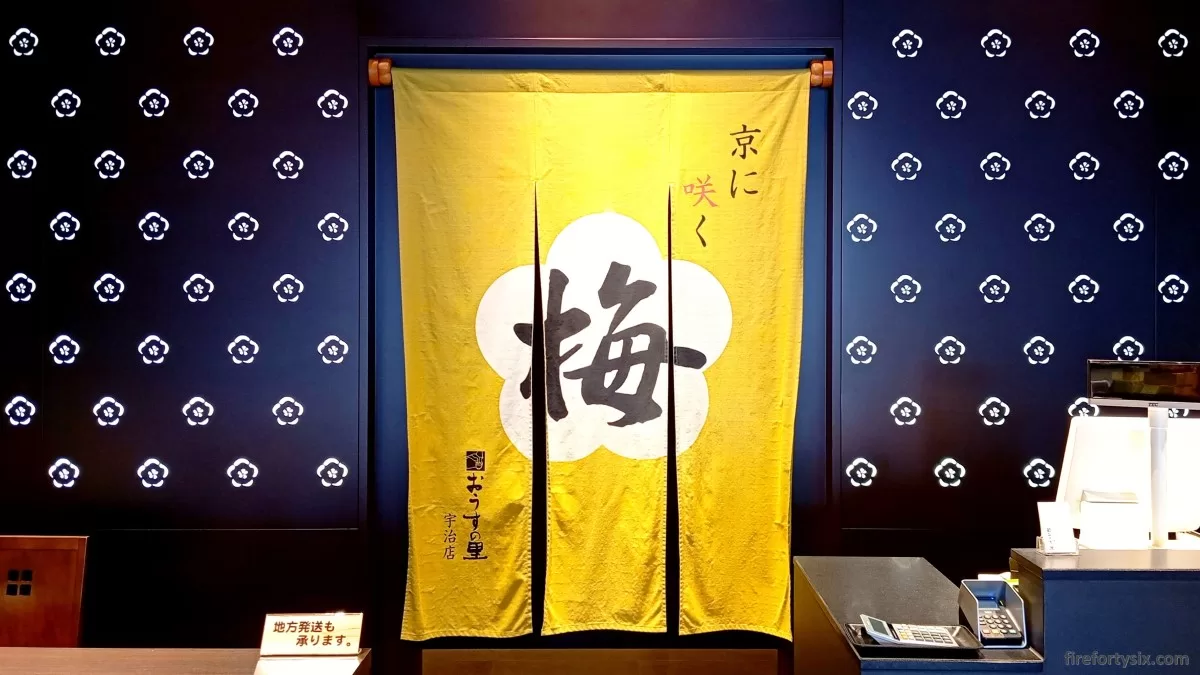Breakfast, for us, is a simple affair. Just a cup of freshly-brewed black coffee and something light, like peanut butter crackers or a chocolate oat bar.
It’s our daily routine at home, and one that we generally stick to even when travelling overseas. Since our stomach capacities are limited, this has the added benefit of freeing up space for a heavier lunch and dinner.
Occasionally, we do make exceptions. For example, when the hotel has a particularly good breakfast buffet, or when there’s a special meal.
Like the asagohan teishoku at Yawaragi (家和らぎ).
At night, Yawaragi is your typical izakaya, one of many in the trendy Shinsaibashi neighbourhood of Osaka. A sanctuary for salarymen to wind down after a long, hard day of work.
But at the break of dawn, it transforms into an atypical breakfast spot, famous for tamago dashimaki prepared à la minute.
What’s so special about the place that draws in people at 5am in the morning?
For those of you old enough to have watched the movie Jerry Maguire, I’m sure you remember the iconic “you had me at hello” scene between Renée Zellweger and Tom Cruise.
Well, that was how I felt at precisely the 9:10 mark of the YouTube video above. When a cascade of ikura shoyuzuke was draped delicately over the fluffy dashimaki.
I’m not big on breakfasts, but it had me at hello.
So, at 6:30am on a cold Thursday morning in February, we set out from our hotel and embarked on a 19 minute trek to the promised land.
Along the way, I checked out the online reviews on Google 4.2⭐/5.0 (86 reviews) and, for a more local perspective, Tabelog 3.39⭐/5.00 (77 reviews).
If you’re wondering about the underwhelming Tabelog ratings, bear in mind that the Japanese adopt a totally different scale.
Anything above 3.00 is good, higher than 3.50 is very good and 4.00 or beyond is excellent. By that measure, it would seem like we were in for a treat.
It took us a while to find the exact side street to walk down, but we managed to get there just as it was getting bright. We were thankful that there wasn’t a queue, and we didn’t have to wait for seats.
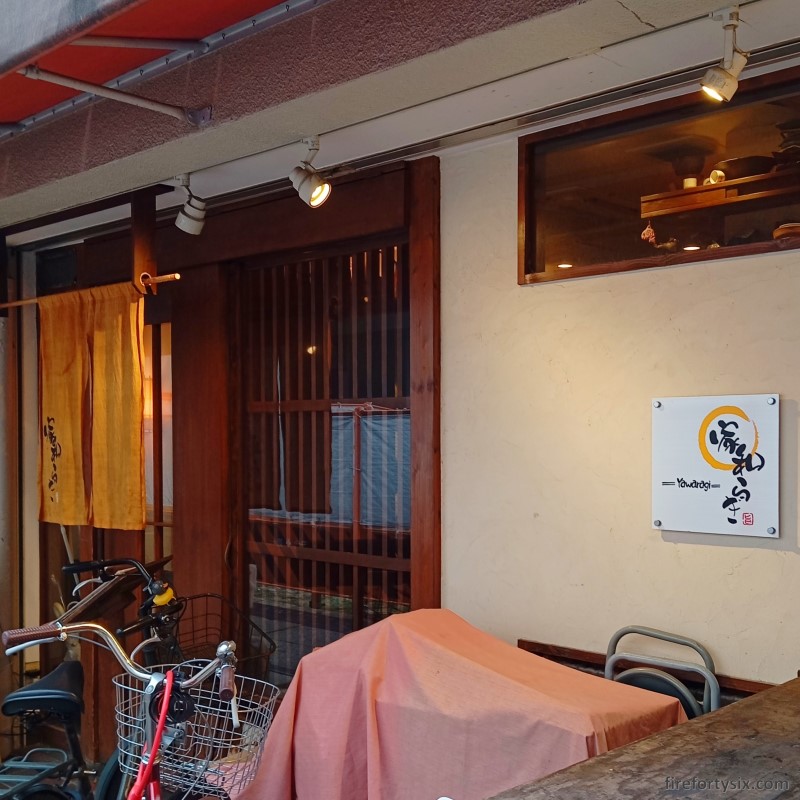
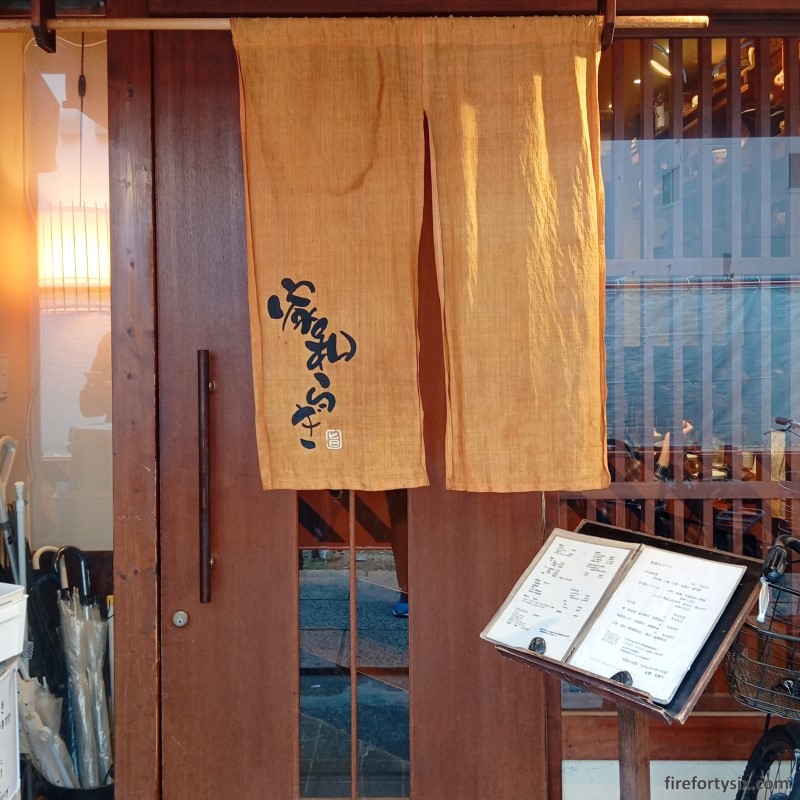
The interior was warm and cosy, just as it appeared on YouTube.
There were several counter seats in front of the chef, an alcove table to the side and a small room towards the back, where we were ushered into.
It had low tables with recessed flooring and seated six comfortably. Soft and diffuse lighting from an overhead paper-framed lamp provided a calm and relaxing environment.
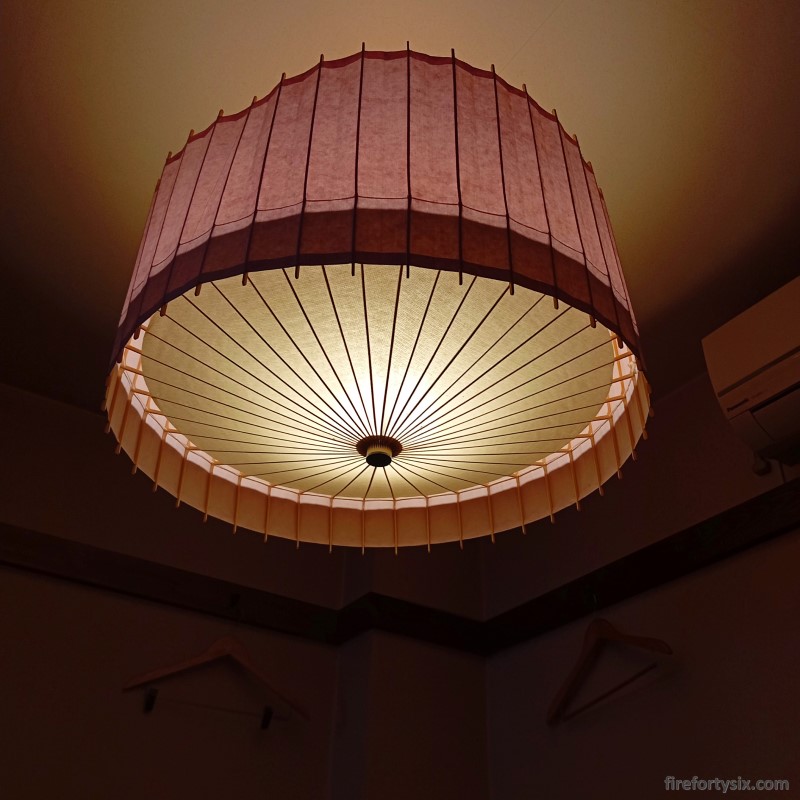
The menus were propped up at the side, and came in both Japanese and English. Clearly, the breakfast at Yawaragi was popular not only with the locals, but also with foreign tourists.
Ordering was straightforward, and the only real decision to be made was what topping to choose for the omelette.
I knew exactly what I wanted, but The Wife had to take some time. She was considering either grated radish or ground chicken, and finally went with the latter.
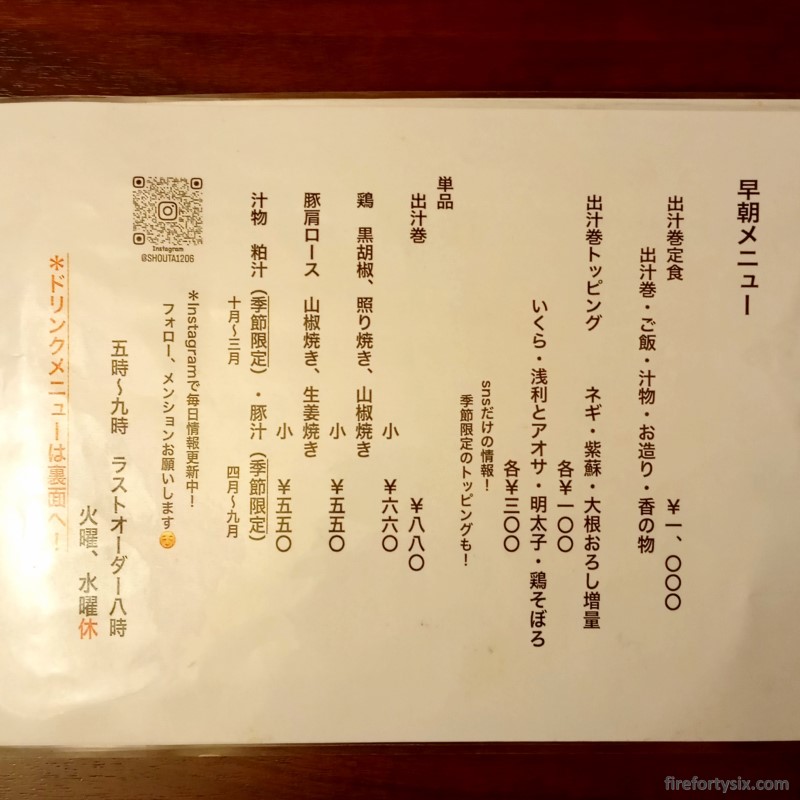
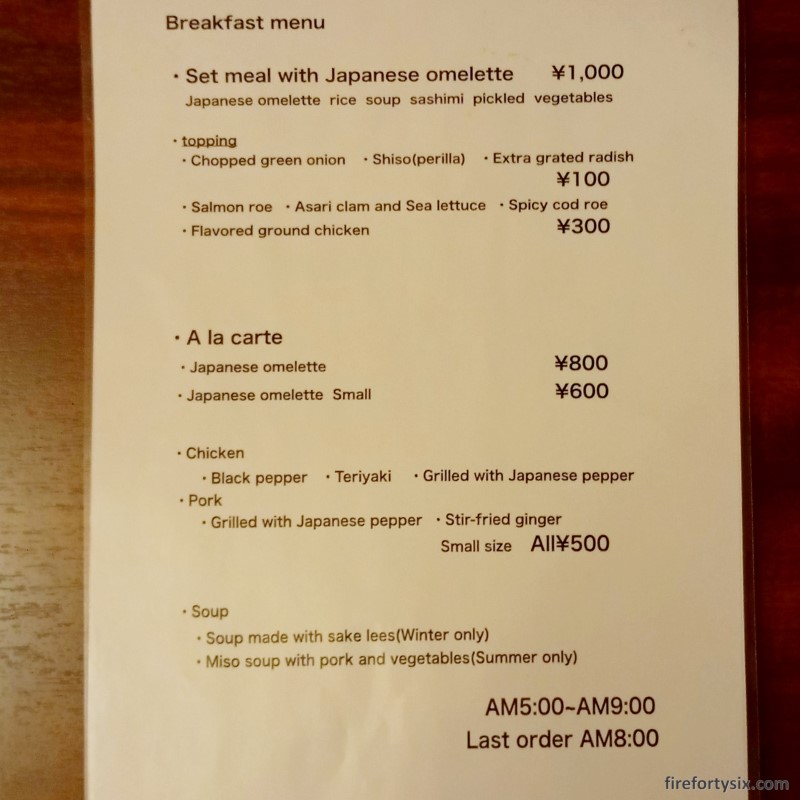
Drinks were not part of the set meal, and we both ordered hot hojicha. Another couple had just finished their meal, and our server cleared their plates before coming back with our tea.
As there were only a few customers at the time, our made-to-order dashimaki didn’t take long to arrive. When all the dishes were laid out in front of us, it looked quite impressive.
There weren’t that many items on the table, but given what we normally have for breakfast, it was a veritable feast.

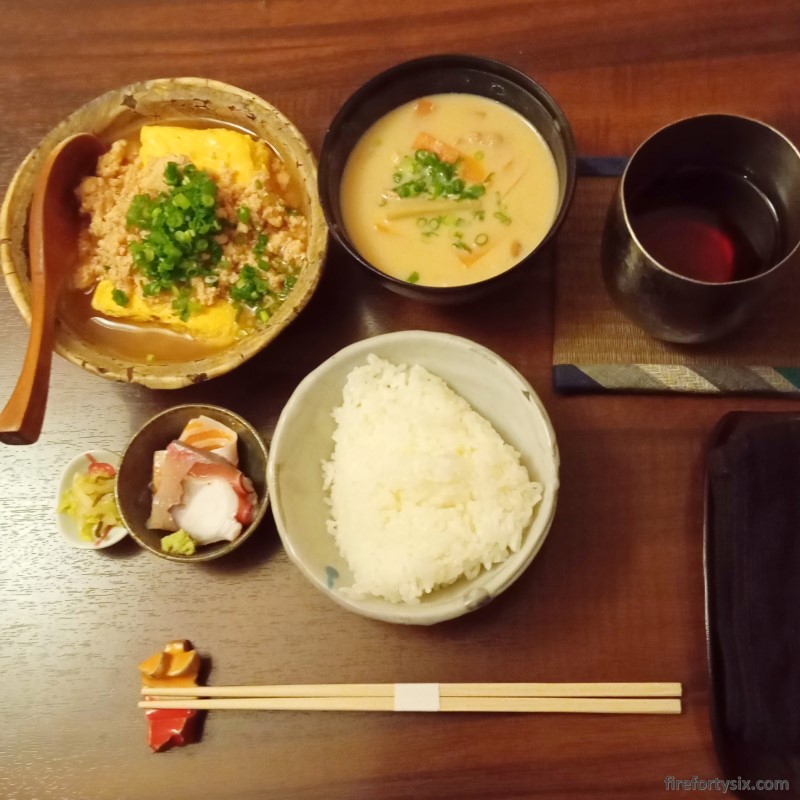
The word for breakfast in Japanese is 朝ご飯 (asagohan), a combination of 朝 (morning) and ご飯 (rice). Therefore, “asagohan” is literally “morning rice” in English, emphasising the importance of the staple in local diets.
Our bowl of plain white rice came with a small dish of sashimi, and an even smaller dish of cabbage pickle. The three slices of octopus, yellowtail and salmon were fresh and tasty, especially the fatty yellowtail.
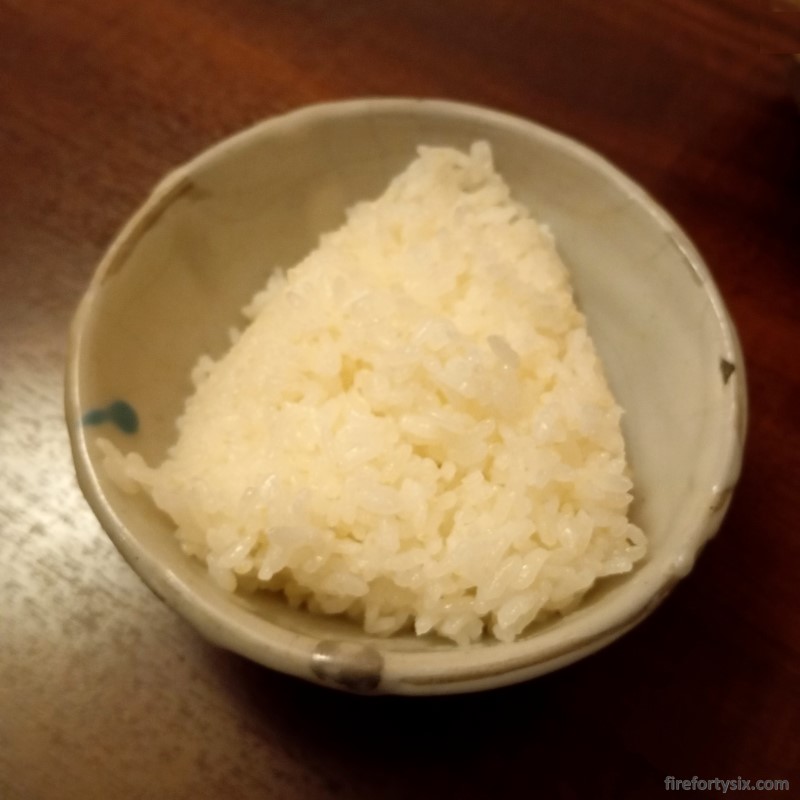

Steam was still coming off my tamago dashimaki, with numerous pearls of ikura barely hanging on for their lives on one of its edges.
The egg omelette itself was fantastically fuwa fuwa, Japanese for “it’s so fluffy!” My wooden spoon cut through the rectangular block, exposing the multiple layers formed by the chef.
It was the second best dashimaki I’ve ever had, second only to the one at Izakaya Ajisen (肴や味泉) on the man-made island of Tsukishima, within the 23 wards of Tokyo.
The additional scoop of soy marinated salmon eggs was the icing on the cake, providing oishii bursts of umami for only an additional ¥300. I regretted not doubling down and upsizing the portion of ikura.
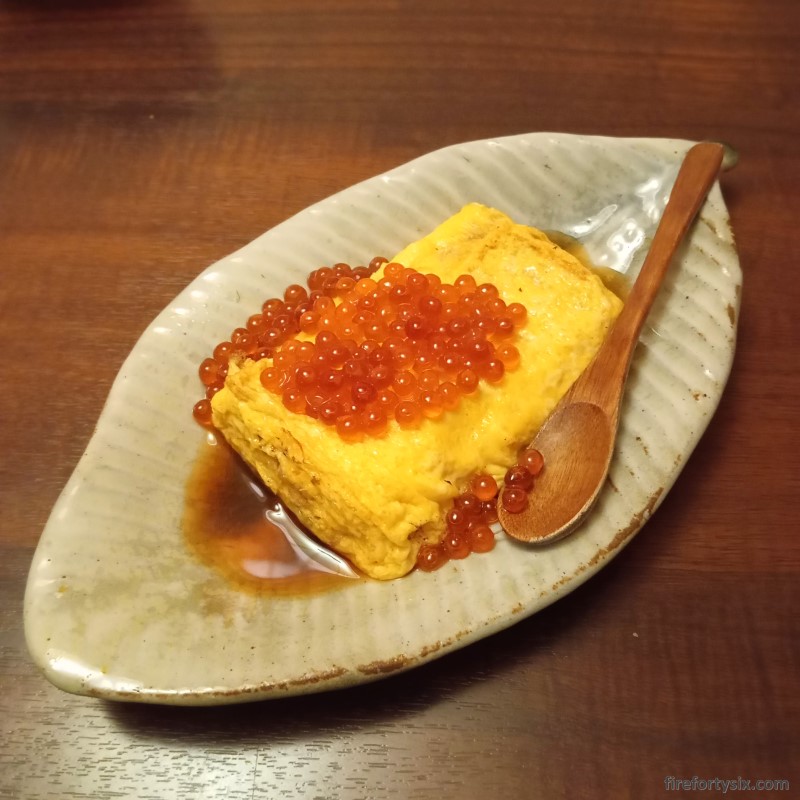
Tori soboro, or ground chicken, is a common dish in Japanese homecooked meals, and it imparted a rustic feel to The Wife’s dashimaki.
It was a bit too heavy on the seasoning though, and wasn’t as nice when eaten on its own. However, it paired perfectly with the white rice, resulting in a filling and heartwarming dish.
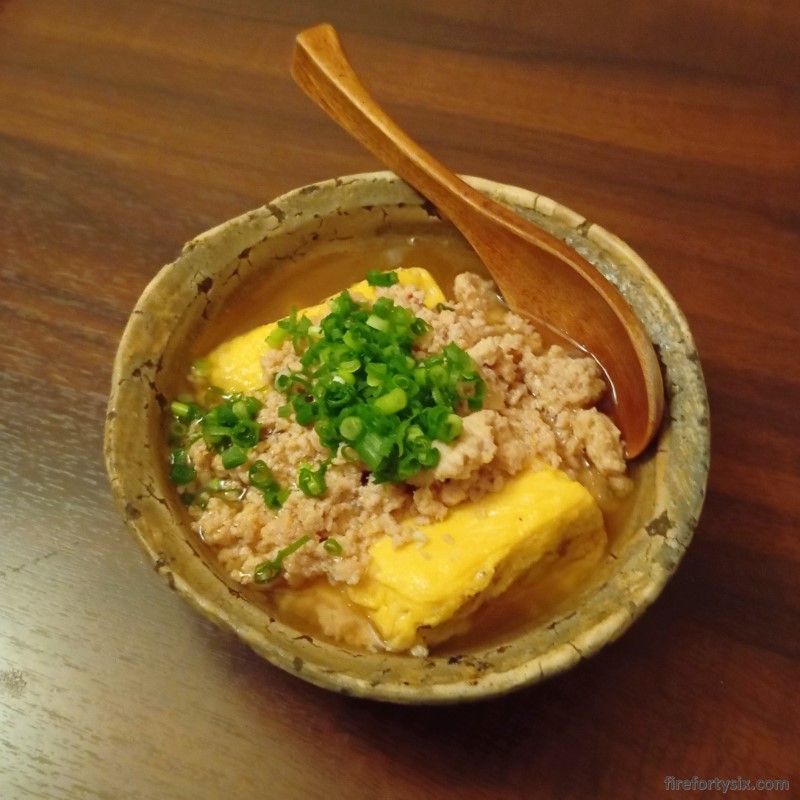
But the revelation that morning had to be the 粕汁 (kasujiru), or sake lees soup. Thick and creamy with an almost cheese-like flavour, it was like nothing we’ve ever had before.
Taste and texture wise, I would describe it as a mashup between a Japanese 豚汁 (tonjiru, or pork and vegetable miso soup) and a New England clam chowder, minus the clams. Finished with a splash of fruity junmai daiginjo, right before serving.
Bold and hearty, with just the slightest floral hint of sake fermentation, it was the perfect soup to sip on during a cold winter morning in Osaka.
We took our time to savour our simple but delicious meal, eating mostly in silence and subconsciously nodding our heads in approval.
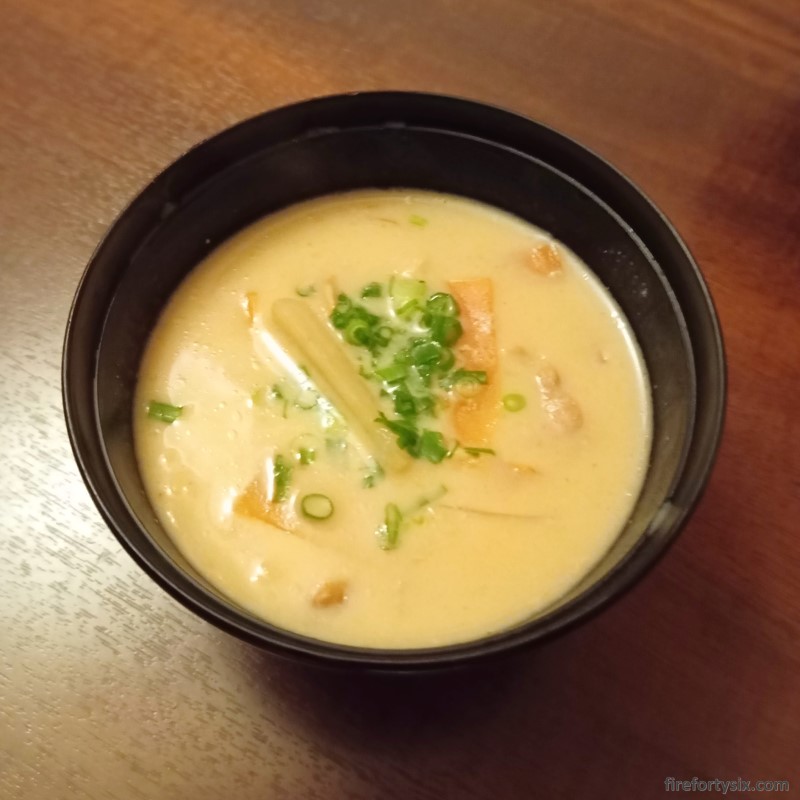
When we finished, the outer dining area was still quite empty, except for a few regulars who were chatting with the chef. I gave him two thumbs up, and as we obviously looked like gaijin, he asked where we were from.
“Singapore,” I replied, fully expecting him to respond with: “Ah, Merlion! Marina Bay Sands!” two landmarks popular with visiting Japanese tourists.
Instead, he gave a big smile and said: “Ah, Isetan Orchard!”, which was something I totally didn’t expect to hear.

While it’s technically located in Singapore’s main shopping district, the Isetan at Orchard Road is more a grocery shop for local residents and less of a tourist attraction per se. Turns out he had fond memories of his cooking demonstration stint there many years ago.
I asked if many Singaporeans had visited Yawaragi, and he shared that we were few and far between. Most of his overseas customers were from South Korea, Hong Kong and Taiwan.
So, if you’re: (a) from Singapore, (b) travelling to Osaka, (c) enjoy a good breakfast and (d) don’t mind waking up early, do consider paying them a visit to help bump up our numbers!


